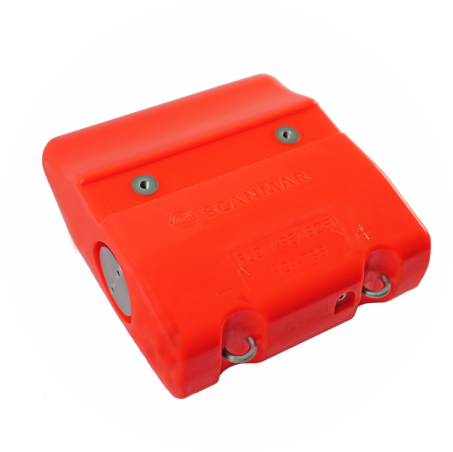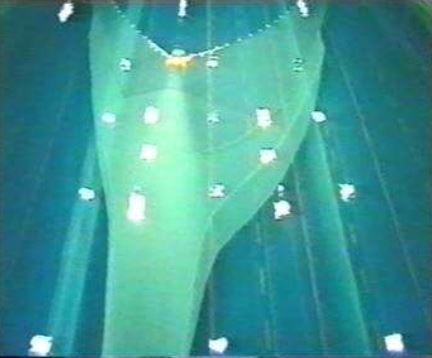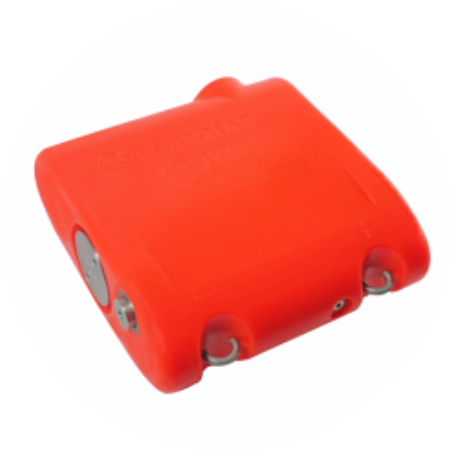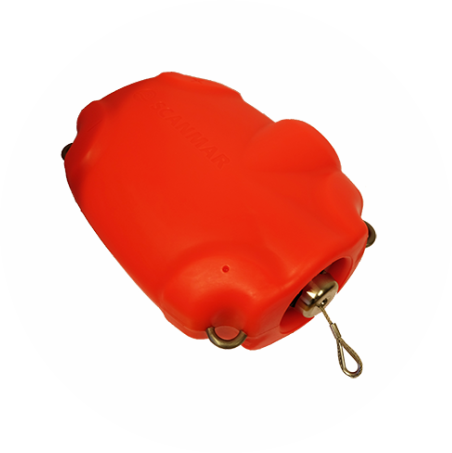Since 1985 a continuous reduction in the world’s fishing fleet has taken place. There are several reasons for this; overfishing, dramatic increase in oil prices, increased international regulations and control, and not least the political changes in former Soviet Union.
Especially for the manufacturers of electronic equipment to the fishing fleet, this caused tremendous challenges and changes, as the number of deep sea new buildings worldwide dropped to virtually zero. One particular problem for the manufacturers of electronic equipment is the amount of money required to develop and utilize new technology; computer-, display-, cellphone, and battery technology, which just became available. With a disappearing market, there was no money available for new developments, which was highly required, and consequently, during the next decades all the major suppliers of fish finding products in Asia, Germany, UK, Norway and the United States of America left the industry or downscaled considerably. The surviving companies were facing increased concentration on echo sounders and sonars, which actually led to such products also being developed for smaller fishing vessels and pleasure crafts.
Scanmar was established in 1980, and the basis was the idea that new technology available; especially computer-, battery- and circuits with low energy consumption, would make it possible to develop and manufacture products we for a long time had dreamt of; reliable cable free Catch Control systems for the fishing fleet: New battery technology developed for cellphones and laptop computers, together with low energy consuming circuits, made the foundation for developing small, easy to handle, sensors with relatively long operation time.
To Scanmar it was a flying start and the focus could be on developing strong reliable sensor constructions with limited need for service, and a reliable cable free communication link to the vessels; both formidable challenges. As expected, being a new product, based on new and unproven technology in under water applications, we immediately saw room for improvements in every part of the system.
Even if Scanmar Catch Control systems immediately became a great success, the functions of the first systems were simple; Catch, Depth and Temperature. Working with a large number of fishermen worldwide, we soon got confirmed, what we had expected for a long time; there existed a possible need for more advanced systems and sensors: Height sensors, Door Distance sensors, Trawl sounders, Trawl Eye, and not least, water flow sensors; Trawl speed, Symmetry and Grid, which maybe, in many types of fishery, are considered the most important sensors today.
The development of the new sensors and functions started immediately. It proved to become more extensive than we had expected: Not only was it difficult develop the technology to detect fish, shrimp and squid from the top of the trawl opening , with the best possible results, compared to what may be seen on an echo sounder, but it also required also considerable changes in improvement in the acoustic transmission technology; processing and transmitting in the sensors and receiving and DSP processing in the receiving units on board the vessels One may not think so, but there are considerable differences in transmission and receiving signals from simple Catch-, Depth and Temperature sensors compared to sensitive sensors like Trawl Eye and Flow sensors.
Luckily; in this period Scanmar was able to finance further development by financing several of millions of USD. Already in 1990 did Scanmar introduce their 3rd generation cable free Catch Control system; it did not only increase accuracy and reliability, which actually was not bad in the first place, but more important, the systems functioned also extremely well Under more difficult conditions; very deep waters, long ranges and harsh weather and water conditions. While trawling earlier basically took place in water depths up to 300, sometimes 600 meters, and the first systems were designed for that, now the sensor constructions and the acoustic communication gave “unlimited” ranges inside the scope of commercial fisheries.
One may say that the development of fisheries to some extent went hand in hand with the development of technology in Scanmar cable free Catch Control systems.
Only after Scanmar had been selling their products for 10 years, other manufacturers realized the potential market, and tried to enter, but it was too late. About 20 companies tried to sell Catch Control systems, but not succeed, and gave up. Later, a few have tried, but it has basically resulted in systems for small vessels; Catch-, Depth-, Temperature- and Distance sensors. Because of low price this may be an interesting alternative to small costal trawlers.
Today Scanmar has delivered 5000 systems, and has naturally acquired lots of experience, which has resulted in continuous improvement of the technology, sensors and, not least value for the customers, both when it comes to increased efficiency, and quality. (The new generation sensors have 5 year warranty).
When you, as a vessel owner, or an advisor; skipper/expert, shall make a decision/give an advice, the first thing to do, is to thrust your own experience and intuition, considering if t is deep sea fisheries or coastal fisheries, secondly to consult with other persons you know have experience in the type of fishing you are doing. What are the important factors to consider?
Do we mind that vessel owners are buying systems from our competitors? Not at all; we want everybody to use and see the advantage of having control wen operating their trawlers, and we know, when more advanced systems are required, we are the alternative.
What should be considered when the time is to invest in a Catch Control system?
1. Price
Price is always an important factor. However, when it comes to investments, it may often be difficult to compare quality of the products and the benefits of using them. Return on investment (RoI) and payback period are therefore ways of comparing investments. The following elements have to be considered:
- System functions and performance. A small coastal vessel can manage with a much smaller system than a vessel far apart from port.
- Increased catches.
- Better quality.
- Reduced fuel consumtion and other costs.
- Warranty.
- Repair and service.
- Reduced costs to wear and tear on vessel and fishing gear.
- Operating time and Charging: Work load and charging time (alternative: 2 sets of sensors).
2. Product configuration
The configuration of the system is essential. While new users do not know about benefit of the most advanced sensors even if they are well known and highly appreciate in the most developed fishery nations, and maybe regarded as the most important, the advantages are not as well known in other countries:
- Trawl Eye; stability and detection ability.
- Trawl speed sensor; water flow in the opening and the belly are important to catch the fish and avoid it disappearing through the meshes.
- Symmetry sensor in the opening is equally important for fish entering the trawl and not immediately escape through the side panels..
- Door sensors; correct spread and door angles have to be correct and continuously monitored for optimal performance, and avoidance of problems, during all phases of the trawling.
3. Product specifications and performance
It is important that all elements of a cable free Catch Control system is suitable for the vessel and type of fishing it is planned for, and that that the actual performance matches the specifications; especially hydrophones and receivers are more critical than many expect:
- We often see that product specifications are given based on theory and laboratory test, and that they are individually set for sensors, hydrophones and receiver units, and not as a system in use during fishing operations.
- Critical installation of hydrophones.
- Receiver units vulnerable to noise from propeller, ship and equipment on board.
- Sensor specification inaccurate due to mounting, practical use and water conditions.
4. Sensor working- and charging time
Lost fishing time due to work with recharging of sensors; removing and replacing of sensor, and charging time, will have negative impact on catches and income, and therefore should be at a minimum and considered closely. The alternative, if working time is short and charging time long, is double sets of sensors.
- Sensors should have enough battery capacity to work for a certain period of time; a trip, a day, a certain number of hauls, in order that charging may take place when it is not interfering with the fishing operations.
- Charging of sensors should be done, even if not fully, in a short period of time, while emptying the cod end, so that no fishing time is lost.
5. Warranty and service
In fishery operations far from ports downturns in fishing, due to problems with the vessels or the fishing gear, may cause serious loss of income and very high, not planned, maintenance and costs. Even if fishing can continue, loss of income may be considerable.
- Product quality and adequate warranty periods are essential for fishing companies that understand how important it is to survey fishing gear, water conditions and catching, in order to perform well at lowest possible costs, and avoid causing damages to the fishing gear.
- Is the supplier able to provide replacement of warranty equipment at short notice?
- Will repair work be possible at short stop in port?
- Are service sensors available for delivery on short notice?
6. Product distribution
The development of fisheries has taken place over hundreds of years, and trawling, in its simplest form, started only 150 years ago, so one may say that the development has gone fast due to ship design, powerful engines and deck machinery (winches; hydraulic and now electric).
It is obvious that this development could not have taken place unless the fishermen have been speaking together, exchanged experience, tried new ways of fishing, and asked designers, shipyards, and gear manufacturers for new solutions to try out.
The costs of catching fish is high, and without the reduction of the fleet that has taken place, new designs and development of new fishing gear, it is a question if fisheries could take place at costs making the end product available to the end users at affordable prices.
There is no doubt that this this development will continue, but the question is at what speed; the development will continue at a pace decided by the market; new designs and equipment based on advanced technology, will cause reduction in price of catching fish, provided healthy government regulations, and nature’s blessing.
Not everybody can afford to invest in completely new vessels, and therefore it is necessary to have extra focus on fishing gear and equipment. There are great variations
- In advanced fisheries there are always needs for assistance and advice, and therefore it is very good if there in the area are fishermen with long experience in the same type of fishing, and familiar with using modern equipment.
- Don’t be afraid to ask others with experience; Technical management of other companies, or experienced crew members.
- Make sure that both positive and negative parameters are disclosed.
- If new to the fishing, hire officers and crew with experience; it is important for owners, as well as crew, to be successful as soon as possible.
7. Competition
Fishing companies, fishing vessels and crews are competitors, and there is always a drive to become best. We all remember histories from the old days, when fishing vessels had to sail long distances for seasonal fisheries, many did not survive, and the whole expedition might end with bankruptcy.
Today it is different, but high quality and maximum volumes give maximum income. At low costs, the margins give profit necessary for further investments and increased margins.
- Watch your competitors.
- Successful competitors may harm your own margins.
- Crewmembers are attracted to jobs where the pay is best.
8. Wrong investments
During my nearly 45 years in the fishing industry (I have also been the part owner of trawlers for 20 years) I have experienced all sorts of attitude from the fishermen (including owners, officers and crew). It is fascinating, and basically I like it very much, especially the attitude of never giving up.
However, there is one thing I never understood: Since I, before I started in the fishing related industry, I was in industrial companies where focus was the best product for the customer, and production in most cost effective ways. If production equipment was not good enough, or better equipment was available, it was exchanged immediately: efficiency made up for the increased investment. On board vessels, including the ones I had part in, I several times could see how we over years tried to have the equipment working better, until we finally had to exchange it by buying new. Results: Lost efficiency over years, and in the end purchase of two sets.
The happiest fishermen I have seen, are those who for years have had on board equipment not working satisfactorily, and then finally replace it with equipment that works to their satisfaction, or better.
- If buying new equipment, don’t be afraid of asking for trial.
- If equipment doesn’t work properly, immediately ask the supplier to have it fixed, or return it.
- High tech equipment not working well from the start, will probably never work satisfactorily.
9. Perspective
When buying High tech equipment, it is always important to have an idea what are the manufacturer’s plans for further development and upgrade of the product. This is especially important for Catch Control systems:
The level of expectations from the fishing industry, and the advanced technology used today, further development of sensors, function and technology is extremely difficult and time consuming. This means that all suppliers, in order to deliver new products or upgrade, thoroughly tested and ready for the market, in the course of the next 5 years, have to be well into the development process.
In Scanmar we have many new things in the pipeline, and we go extremely seriously about it:
- We have continuously made registrations wen we have been on board fishing vessels and research vessels, and discussed new ideas with leading experts for many years.
- We have been studying and evaluating technologies available to see if they are suitable for the new products, sensors and functions we have in mind.
- Where we have not found the adequate technology, we have made research for new ways of solving the problems, and applied for international patents, most of them already awarded.
- There are no secrets; if you take a look at our web site, Scanmar Info 2011/12, you will find some of the patents and new solutions described.
- We have done most of the basic work, but still we consider how we are going to put things together to serve the fishermen’s need as well as possible.
10. Request
Many years ago one leading news magazine for the fishing industry wrote:
“ Scanmar is the company with the eyes under water and the ears above water”
We feel that this is a correct statement. Many High tech companies start with a technology and try to make a product based on that technology, or use an existing technology for another area (there are several examples of this amongst companies that tried to copy Scanmars Catch Control solutions). Scanmar, on the other hand has always, and will always, do it the other way around; try to identify the need of the user, and then find, or develop, suitable technology for the product.
We have a large base of information that are the base for our patents, and included in our R&D work, but we are open to more. With the increased activity in ship design and constructions, there may be ideas that can be suitable for the new vessels, and where Scanmar may be able to help:
- If you have any idea, just any, please contact us. We may have evaluated it earlier, or not, but we would be more than happy to consider it.







